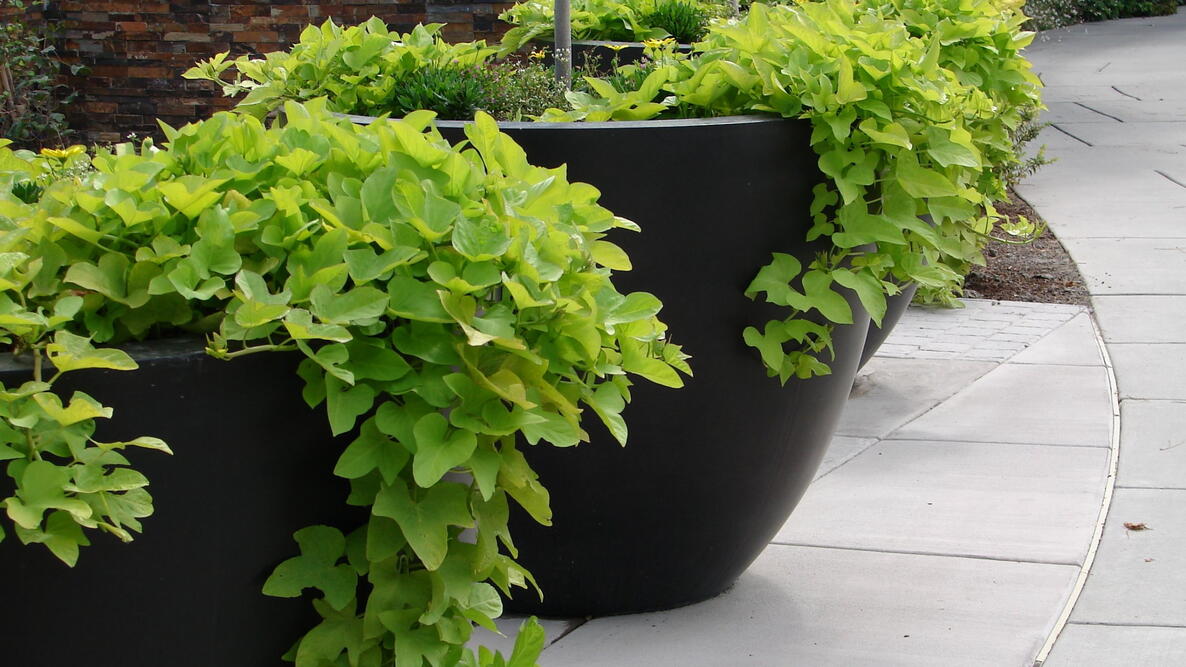Sweet potato vine is a beautiful and versatile ornamental plant with cascading foliage that comes in a variety of colors.
This tender perennial is easy to care for—and a favorite among gardeners for its ability to add drama and color to containers and garden beds.
Learn everything you need to know about planting, propagating, and caring for sweet potato vines.
About Sweet Potato Vines
Gardeners everywhere have a sweet spot for sweet potato vines. Their lush, leafy, vividly colored trailing vines fall as much as 10 feet and add contrast, cover, and “kick” to container arrangements.
Ornamental cultivars have been bred for visual appeal, not growers’ appetites. These sweets are eye candy: their foliage colors range from burgundy to nearly black, chartreuse, deep purple, and light green to red, variegated (green with pink or white), and yellow.
Their leaves can take on exotic forms, including three-lobe, heart-shaped, and maple-leaf-reminiscent shapes.
These cousins of the morning glory (Ipomoea purpurea) occasionally produce small, trumpet-shaped flowers that are insignificant. At first frost, the plants go dormant.
Don’t confuse this plant with the edible sweet potato, the root vegetable. Although sweet potato vine root tubers can be eaten, consumption is not advised, as their taste is variously described as bitter, starchy, and unsatisfying.
Sweet potato vine is a tuberous-rooted tender perennial native to tropical America. It is winter-hardy in Zones 9 to 11 and grown as an annual elsewhere.












